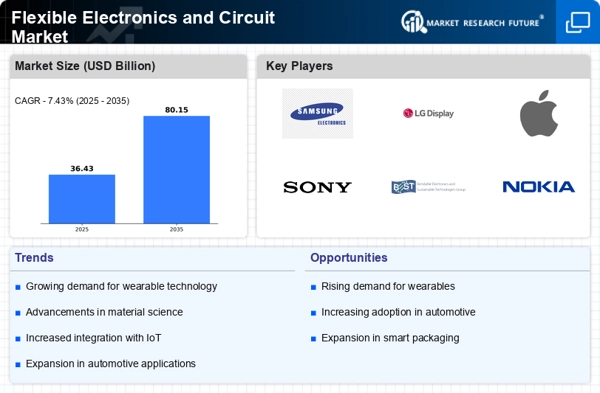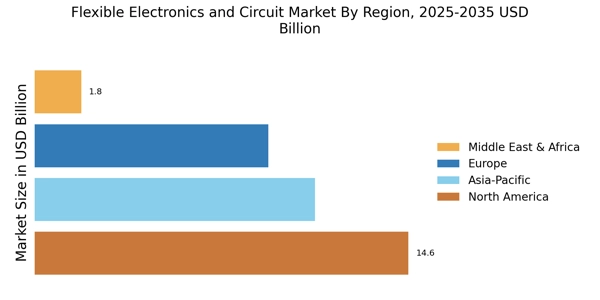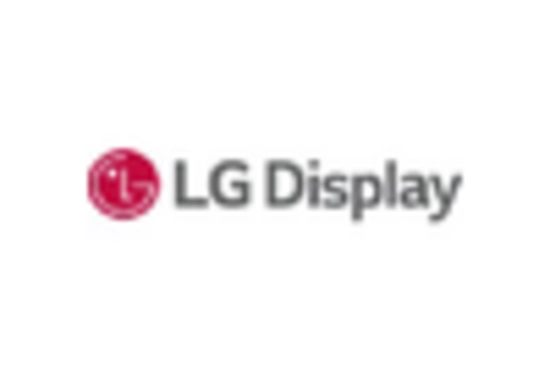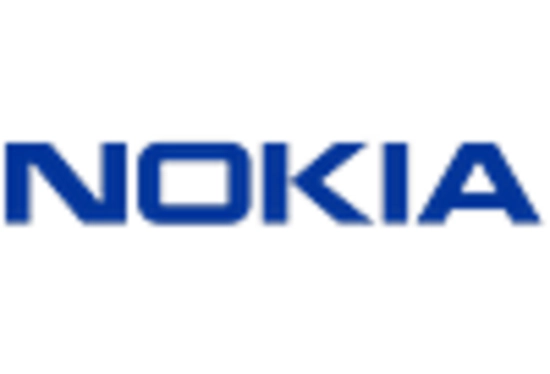Emergence of Smart Textiles
The Flexible Electronics and Circuit Market is increasingly intersecting with the fashion and textile sectors through the emergence of smart textiles. These innovative materials integrate flexible electronics to create garments that can monitor health metrics, adjust temperature, or even change color. The market for smart textiles is projected to grow at a rate of approximately 25% over the next few years, reflecting a burgeoning interest in functional fashion. This growth is driven by advancements in flexible circuit technology that allow for seamless integration into fabrics without compromising comfort or aesthetics. As the demand for multifunctional clothing rises, the flexible electronics sector is poised to play a crucial role in this evolution.
Growth in Consumer Electronics
The Flexible Electronics and Circuit Market is significantly influenced by the expansion of the consumer electronics sector. With the proliferation of smartphones, tablets, and other portable devices, the demand for flexible circuits is on the rise. Market analysis indicates that the consumer electronics segment is expected to account for a substantial share of the flexible electronics market, with projections suggesting a growth rate of around 15% annually. This growth is largely driven by the need for thinner, lighter, and more efficient electronic components that flexible circuits can provide. As manufacturers strive to innovate and differentiate their products, the integration of flexible electronics becomes increasingly vital.
Advancements in Display Technologies
The Flexible Electronics and Circuit Market is witnessing transformative advancements in display technologies, particularly with the rise of flexible and foldable screens. These innovations are reshaping consumer expectations and driving demand for flexible circuits that can support such technologies. Recent estimates suggest that the flexible display market could reach a valuation of over 30 billion dollars by 2026, indicating a robust growth trajectory. This trend is fueled by the increasing adoption of flexible displays in smartphones, televisions, and other electronic devices. As manufacturers invest in research and development to enhance display capabilities, the role of flexible electronics becomes more pronounced, enabling new form factors and functionalities.
Rising Demand for Wearable Technology
The Flexible Electronics and Circuit Market is experiencing a notable surge in demand for wearable technology. This trend is driven by the increasing consumer interest in health monitoring devices, fitness trackers, and smartwatches. According to recent data, the wearable technology segment is projected to grow at a compound annual growth rate of approximately 20% over the next five years. This growth is attributed to advancements in flexible electronics that allow for lightweight, comfortable, and durable devices. As consumers seek more integrated health solutions, manufacturers are focusing on developing flexible circuits that can seamlessly fit into various wearable formats, enhancing user experience and functionality.
Increased Investment in Research and Development
The Flexible Electronics and Circuit Market is benefiting from increased investment in research and development across various sectors. Companies are allocating significant resources to explore new materials, manufacturing techniques, and applications for flexible electronics. This trend is indicative of a broader commitment to innovation, with R&D spending in the flexible electronics sector expected to rise by approximately 10% annually. Such investments are crucial for enhancing the performance and reliability of flexible circuits, enabling their application in diverse fields such as healthcare, automotive, and consumer electronics. As the industry evolves, the focus on R&D will likely drive further advancements and market growth.

















Leave a Comment